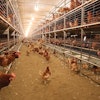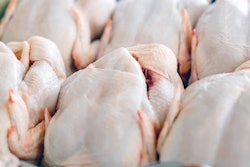
The Paraguayan poultry and livestock production sectors are booming. A few months ago, we reported that the case of Paraguay was worth mentioning because of the livestock growth rates. Two years ago, in 2014, the country exported more beef than Argentina, with a very high-quality level. In fact, according to the U.S. Department of Agriculture (USDA), it is expected to be the sixth-largest beef exporter in 2016, even above traditional beef exporting countries as Uruguay.
Good times for poultry production
Paraguayan poultry undergoes good times. “This year, we estimate a 10 percent growth rate, mainly in broilers, but less in layers," says Paul J. Mauger, president of the Paraguay Poultry Producers Association (Avipar) in an interview with Industria Avícola.
Together with growth in production, poultry consumption is also increasing in this country of 7 million inhabitants. "We are around 20 kg of chicken per capita," says Mauger, compared to just 13 kg a few years ago." Chicken consumption has been slowly increasing. Egg consumption is also going very well, albeit at a slower pace. "Consumption is about 130 eggs per person per year," according to Avipar estimates.
Presently, about 180,000 chickens are processed per day, i.e., 65 million chickens produced annually. According to our WATT database, Paraguay is in the last places of production in Latin America, just above Uruguay and El Salvador.
In layers, our database shows there are 2.8 million hens in production a year, which puts this country in the same place in Latin America as broiler production, above only Nicaragua and Panama. The number of eggs produced is around 648 million eggs a year.
All poultry genetics are imported from Brazil.
Corn and soybeans: competitive advantage
Paraguay has the great advantage of producing enough soybeans and corn. In fact, part of the production is exported to neighboring countries. "Around 90 percent of the cost of production originates in the country," says the Avipar president.
As reported earlier, according to Alltech’s Global Feed Survey, in terms of growth, Paraguay presented an outstanding 25 percent growth in feed production, which places it among the countries with the highest growth rate in this category, along with Argentina (with an 11 percent growth rate) and Bolivia (16 percent).
Paraguay is growing in all livestock sectors, "because it has cheap soy and corn, the main drivers of the ability to produce feeds," said Aidan Connolly, director of Innovation at Alltech, in an interview about the Alltech’s Feed Survey. "In terms of exports, Paraguay has also grown due to the limitation of Argentina to export agricultural products,” said on that occasion Maria Sol Orts, communications manager for Latin America at Alltech.
Paraguay generally fits well with the trend that Latin America has shown in recent years, a fairly promising picture in the feed industry, facing a good 2016. Latin America produces 17 to 19 percent of the global animal feed, with growth rate of 3.5 percent in recent years.
The challenge of being land-locked
Paraguay is looking at the possibility of exporting chicken. In fact, there have been some inroads in countries such as Russia and the Arab countries. However, Paraguayan poultry producers have a complicated situation of economic importance. "As we are a land-locked country, we have to pay extra freight up to the ocean. Other countries or companies do not have that extra cost,” says Mauger.
Avipar represents their member poultry companies, which in turn represents contract producers. For exports, Avipar has established links with the Ministry of Industry and Trade, for the national program called Rediex, the Investment and Export Network. In this way, they will open international markets.
On the other hand, although they produce enough corn and soybeans, the cost of these grains is controlled by the world market. "It's not like in the old days, that Paraguay consumed only what was domestically produced." Then, "there was a chance for a better price of grains, but not now," he adds.
In addition, Paraguayan poultry producers have other challenges. As a sector, "we're doing great emphasis on biosecurity." Along with the National Quality and Health Service, Senacsa, which is the agency in charge of dealing with these cases, they deal with biosecurity, health issues, and in doing promotional work to increase consumption.


















